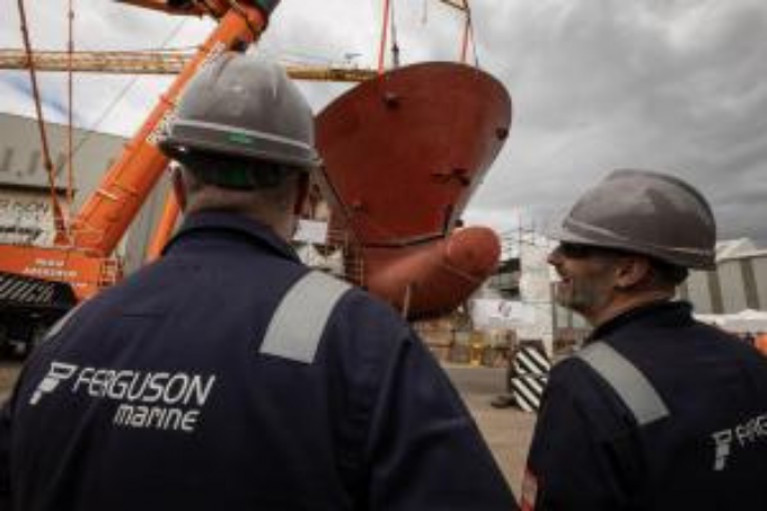Displaying items by tag: Hull 802
Clydeside shipyard Ferguson Marine announced on Monday, the completion of a major milestone in the build of one of the dual fuel ferries currently under construction.
Hull 802, as the vessel is currently known, was fitted with its large bow unit which is the largest single unit added to the ferry’s steel hull, completing the bow structure.
This week will mark a key moment in the vessel’s progress when the final units are lifted into place, completing the main hull and steelwork and making way for the installation of the ferry’s aluminium superstructure, which is all the units that sit above the main deck.
Over the coming weeks and months, resources will ramp up to around 150 people working on Hull 802 to support the construction effort.
The National has more on the Port Glasgow yard which Afloat adds is constructing the ferry for CalMac's Uig Triangle service.
Whereas the first ferry when completed, Glen Sannox is to serve on the Arran service on the Firth of Clyde.

























































